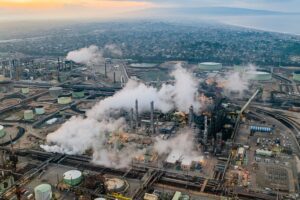Early planning, inventory readiness and supply-chain collaboration are critical for successful petroleum refinery turnarounds
In the ever-evolving world of petroleum refinery operations, few events carry the scale, risk and financial weight of a plant turnaround. These scheduled shutdowns, designed for maintenance, upgrades or the integration of new capital projects, require a level of foresight and coordination that spans many months. While technical execution during a turnaround is critical, the groundwork laid in the planning and procurement phases is what determines whether these projects succeed.
Early planning, inventory readiness and supply-chain collaboration are all critical elements in refinery turnarounds. It’s important for decision makers to understand logistical complexities and the costly consequences of delays, as well as strategies for mitigating these risks.
The timeline of a turnaround
For a major turnaround, scheduling typically begins about a year in advance. When capital projects are involved, that timeline may extend well beyond 12 months. Much of the equipment required is fabricated to order, with lead times often stretching into the 40–50-week range, depending on material availability and design specifications.
There are large pieces of equipment or vessels that can have very long lead times. These aren’t items one can simply pull off the shelf. A vessel the size of an airplane doesn’t just sit in a warehouse waiting to be installed.
Even on the instrumentation side, where components like fittings, valves, gauges, filters and flow switches often have shorter lead times, supply-chain volatility has made pre-planning essential. Over the past few years, commodities like industrial filters and specialty materials have seen increases in lead times.
Accurate specifications and early collaboration
When working with engineering and procurement contractors (EPCs), planning tends to start correctly. They are accustomed to long project timelines and often provide detailed specifications and part lists well in advance. However, even then, distributors play a critical role in translating application requirements into real-world product selections.
Key data points to discuss with EPCs include pressure, temperature, flowrate, media composition and compliance with the refinery’s approved manufacturers list (AML). An AML restricts sourcing to specific, vetted suppliers. If a product recommendation falls outside that list, a formal management of change (MOC) process must be initiated, often involving multiple levels of engineering approval. While this process is necessary to maintain quality and safety standards, it can be time-consuming and cause substantial delays.
Overcoming these costly delays requires early engagement between distributors and refinery teams, especially as an increasing number of seasoned journeymen retire, and newer staff may not yet be familiar with every specification or requirement.

Early planning, inventory readiness and supply-chain collaboration are all critical elements in refinery turnarounds (photo supplied by author with credit to AdobeStock)
Inventory planning
In many refinery operations, there is still a tendency to rely on reactive procurement. Orders are placed shortly before the turnaround, sometimes just weeks in advance. When long-lead items are involved, this practice creates unnecessary risk.
One proven strategy to mitigate this is developing a stocking plan in collaboration with refinery warehouses. Distributors can help identify critical components and maintain minimum and maximum inventory levels at the site. When implemented effectively, this approach not only ensures product availability but also streamlines the purchasing process, reduces downtime and softens the logistical burden on engineering and maintenance teams.
The cost of missed timelines
To underscore the real-world implications of these planning challenges, consider the following example:
A hydrogen plant within a refinery had an upcoming turnaround planned more than a year in advance. The engineering firm provided specifications for large butterfly valves, which were compliant with the plant’s AML. The lead time on these valves was 52 weeks. This was long, but manageable within the project window. However, around week 32, the manufacturer experienced a delay, ultimately extending delivery by an additional 12 weeks. The delay threatened the entire shutdown schedule. As a workaround, a temporary set of valves, not on the AML and not ideal for the service conditions, was sourced. This required an expedited MOC, and while the substitute valves held up for the 12 weeks, the plant was later forced to shut down again to install the originally specified components.
This cost the plant millions of dollars in lost production and shutdown and startup costs.
Lessons learned. The example above is not an outlier. It’s a cautionary tale that many in the industry can relate to. There are several best practices to follow:
First, start planning early. Even with a standard 12-month planning cycle, delays can undermine the best laid plans. For projects involving long-lead materials or custom equipment, 18 months of lead time is not excessive. Starting early gives stakeholders room to address setbacks, navigate MOC processes, and align with supply chain constraints.
Second, it’s important to define the application parameters thoroughly. Distributors and suppliers can only recommend the right components if they have a clear understanding of the operating conditions. Collecting detailed parameters like pressure, temperature, media and flowrate should be among the first steps in the procurement conversation.
It is also crucial to establish stocking plans with minimum and maximum levels. By working collaboratively with warehouse and procurement teams to pre-position essential materials, managers can reduce last-minute scrambles and ensure continuity in critical systems.
Before recommending any product, check the refinery’s AML and plan for any exceptions. If a product falls outside that list, but offers a better technical fit, initiate the MOC process early. Waiting until a shutdown is imminent leaves little room for change. Orders must be aligned, with raw materials secured well in advance. This requires active communication and regular status checks with distributors.
Turnarounds are won in the planning phase
Refinery turnarounds are among the most complex logistical challenges in industrial operations. Success hinges not just on execution in the field, but on decisions made months in advance — by planners, engineers, procurement officers and supply-chain partners.
By embracing early engagement, establishing inventory strategies and respecting the intricate balance between technical needs and procurement constraints, refiners can avoid costly delays and ensure their turnarounds deliver on time, on budget, and with minimal disruption. ■ Edited by Dorothy Lozowski
Author

Rich Wilbur is the Northern California refining strategic account manager at Valin Corporation (www.valin.com), a subsidiary of Graybar, a leading technical solutions provider for the technology, energy, life sciences, natural resources, and transportation industries.